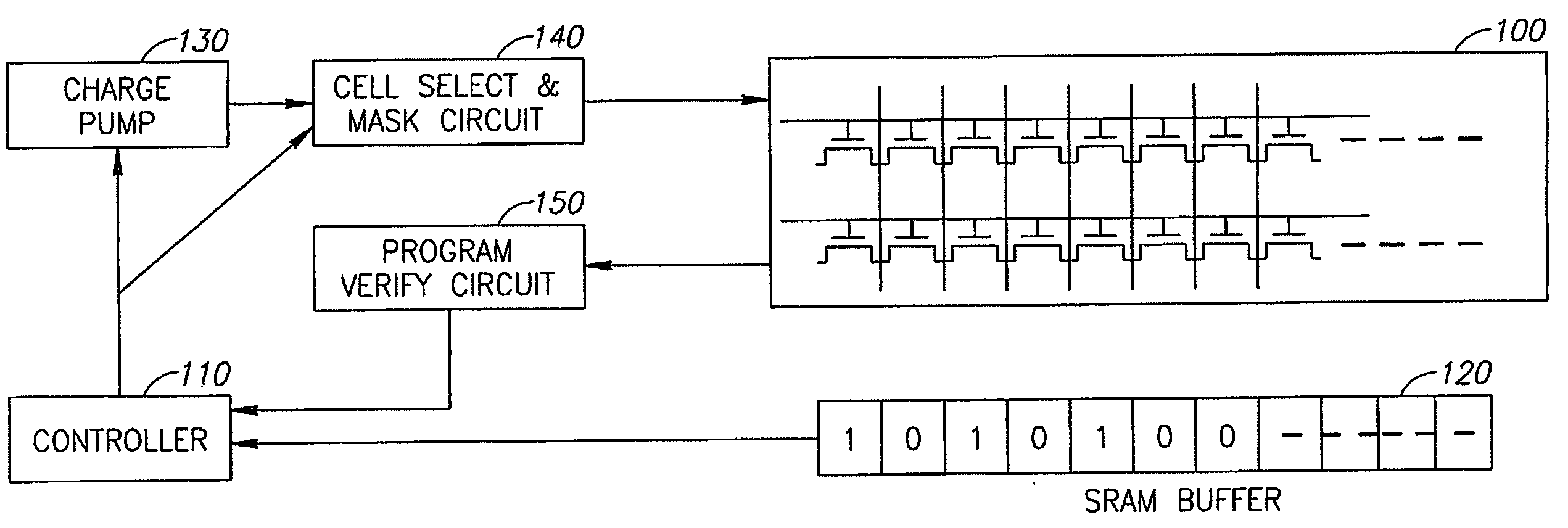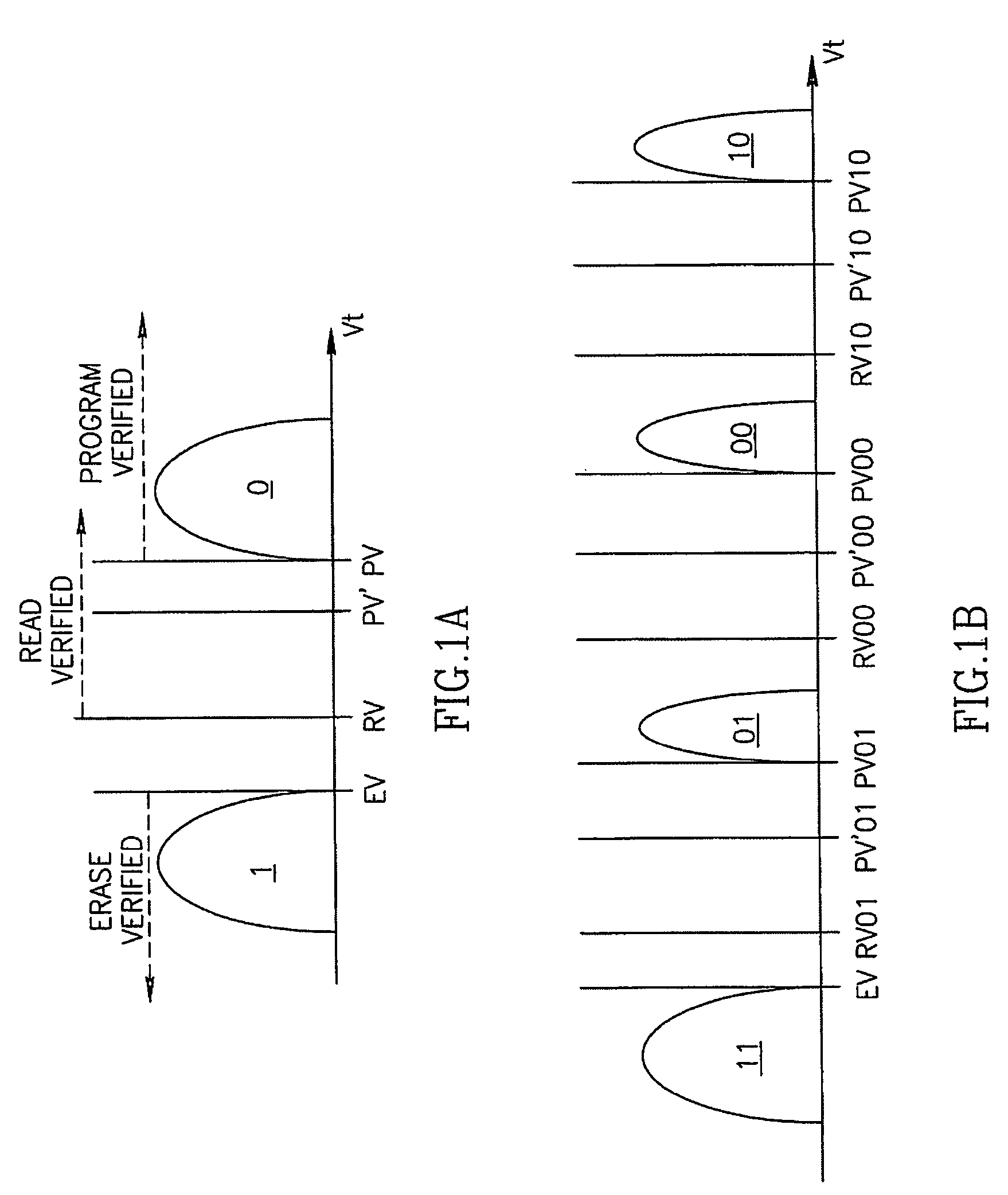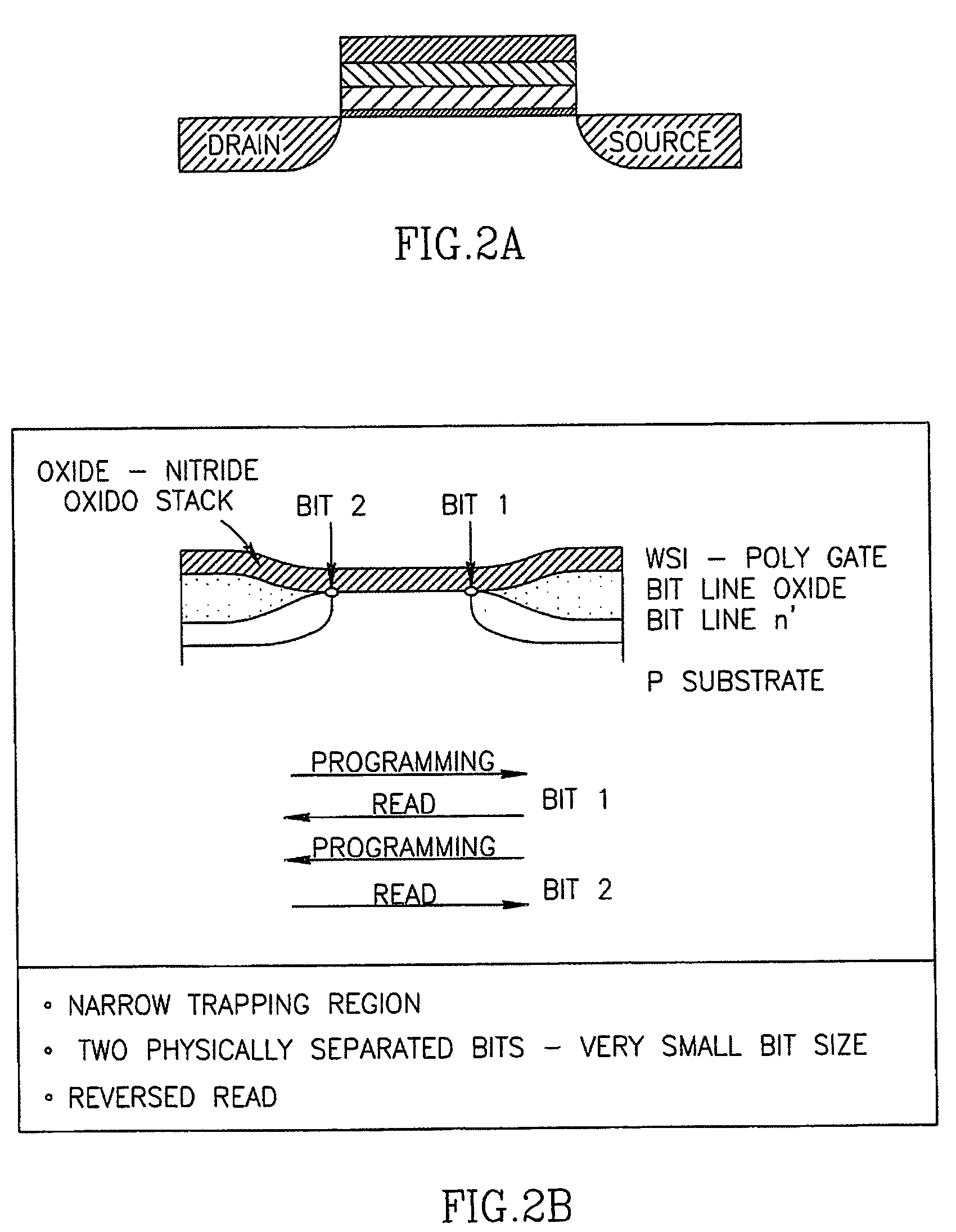Method, system and circuit for programming a non-volatile memory array
a non-volatile memory and array technology, applied in the field of non-volatile memory (“ nvm”) cells, can solve the problems of increasing the programming tail, reducing the nvm's threshold voltage, and increasing the charge in the cell, so as to achieve the effect of lowering the programming rate and reducing the programming variation
- Summary
- Abstract
- Description
- Claims
- Application Information
AI Technical Summary
Benefits of technology
Problems solved by technology
Method used
Image
Examples
Embodiment Construction
[0042] In the following detailed description, numerous specific details are set forth in order to provide a thorough understanding of the invention. However it will be understood by those of ordinary skill in the art that the present invention may be practiced without these specific details. In other instances, well-known methods and procedures have not been described in detail so as not to obscure the present invention.
[0043] The present invention is a method circuit and system for programming non-volatile memory (“NVM”) cells in an NVM array. According to some embodiments of the present invention, one or more NVM cells of a memory array may be programmed using a controller or programming circuit adapted to provide a first programming phase and a second programming phase, wherein programming pulses associated with the second programming phase may induce relatively greater threshold voltage changes in cells having less stored charge than in cells having relatively more stored charg...
PUM
 Login to View More
Login to View More Abstract
Description
Claims
Application Information
 Login to View More
Login to View More - R&D
- Intellectual Property
- Life Sciences
- Materials
- Tech Scout
- Unparalleled Data Quality
- Higher Quality Content
- 60% Fewer Hallucinations
Browse by: Latest US Patents, China's latest patents, Technical Efficacy Thesaurus, Application Domain, Technology Topic, Popular Technical Reports.
© 2025 PatSnap. All rights reserved.Legal|Privacy policy|Modern Slavery Act Transparency Statement|Sitemap|About US| Contact US: help@patsnap.com



